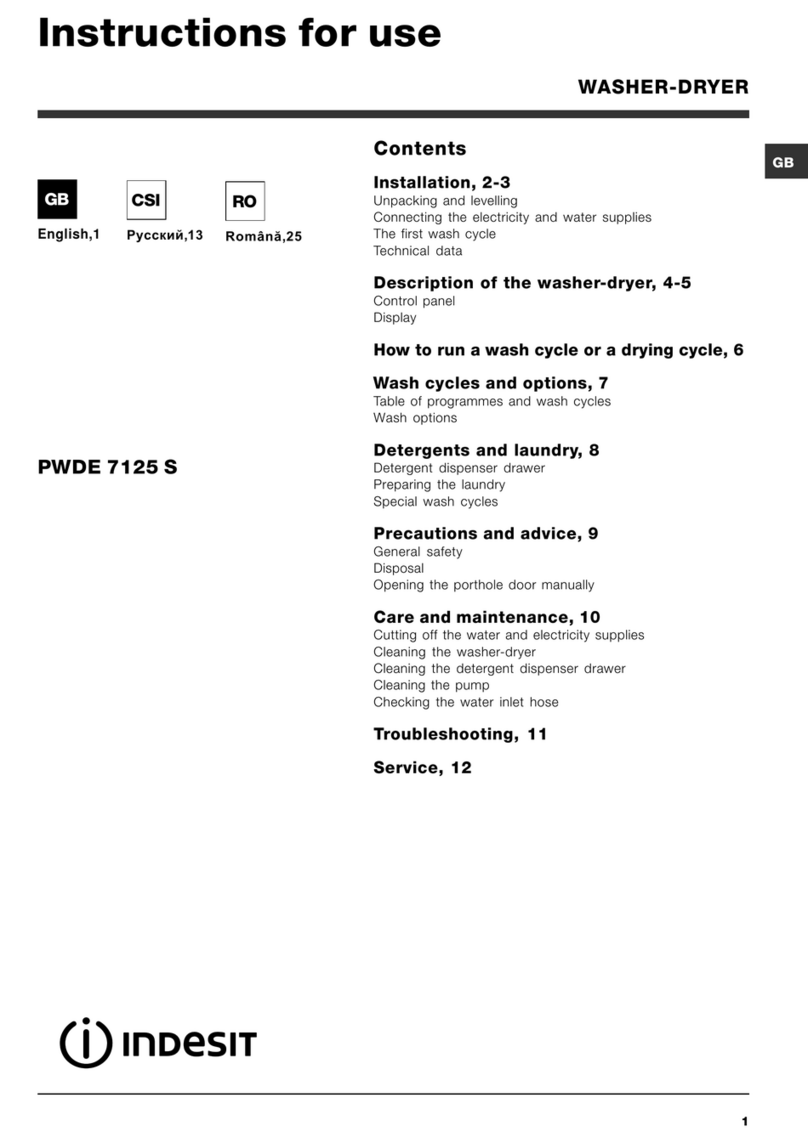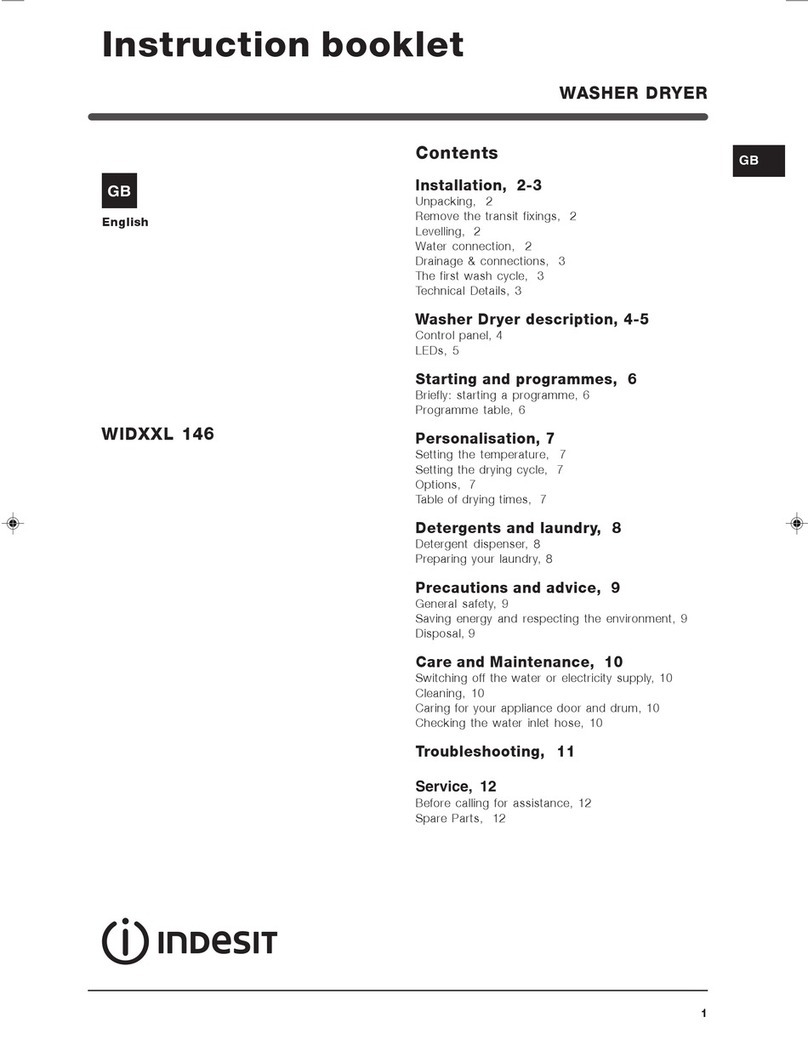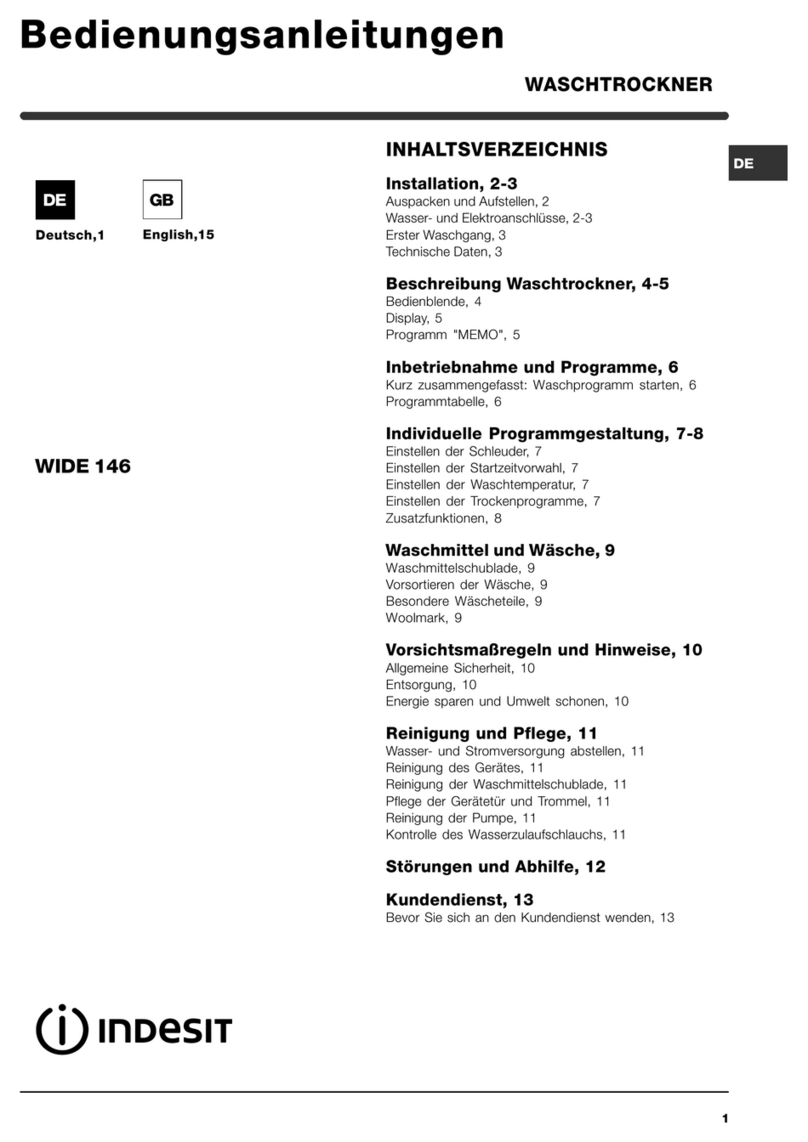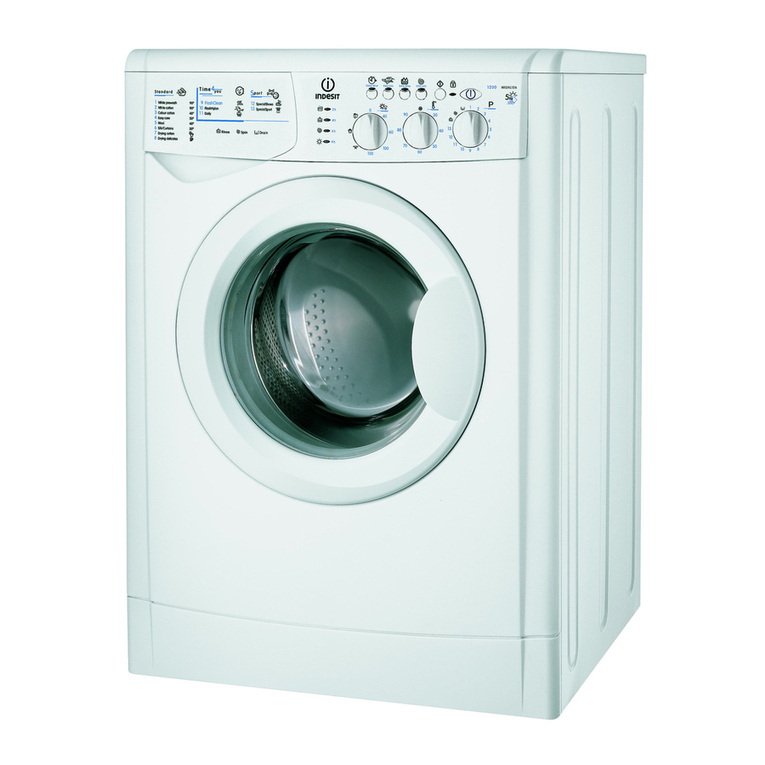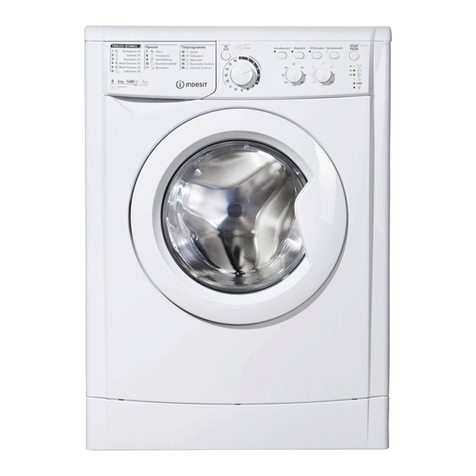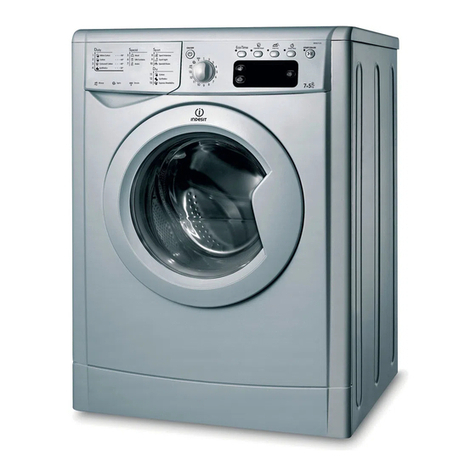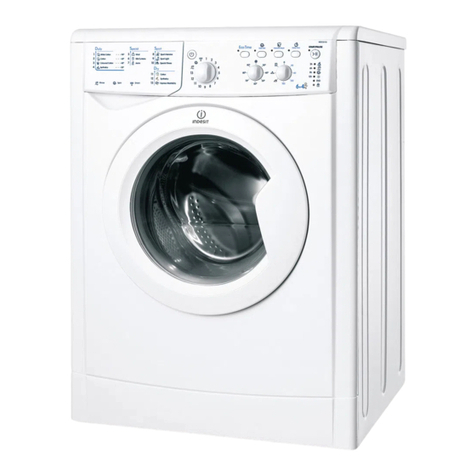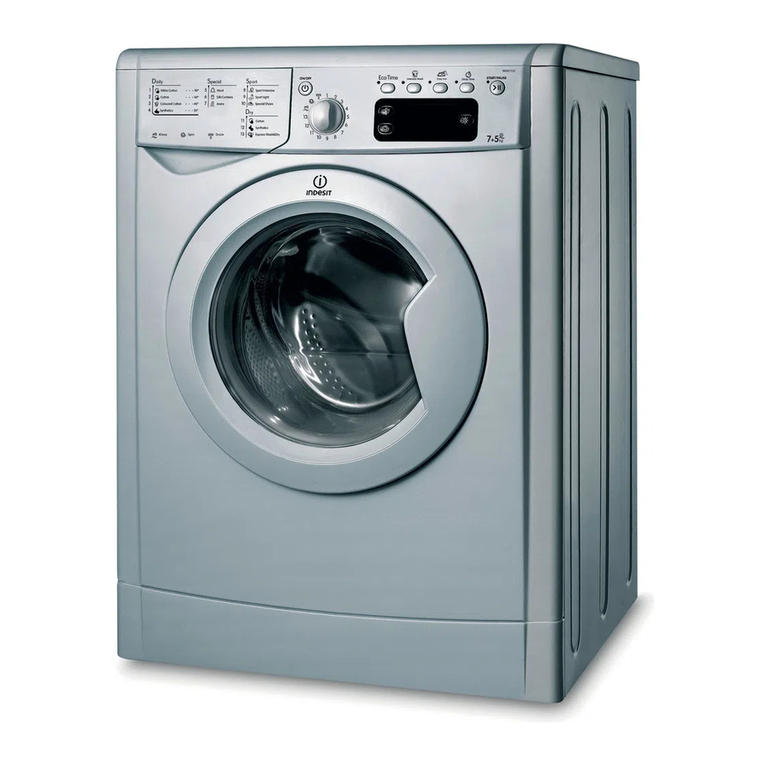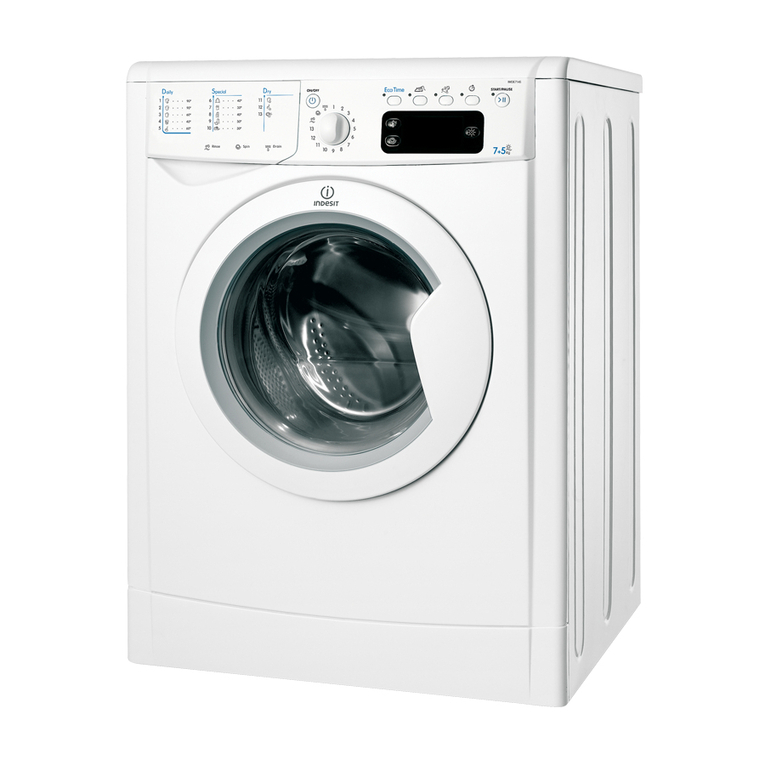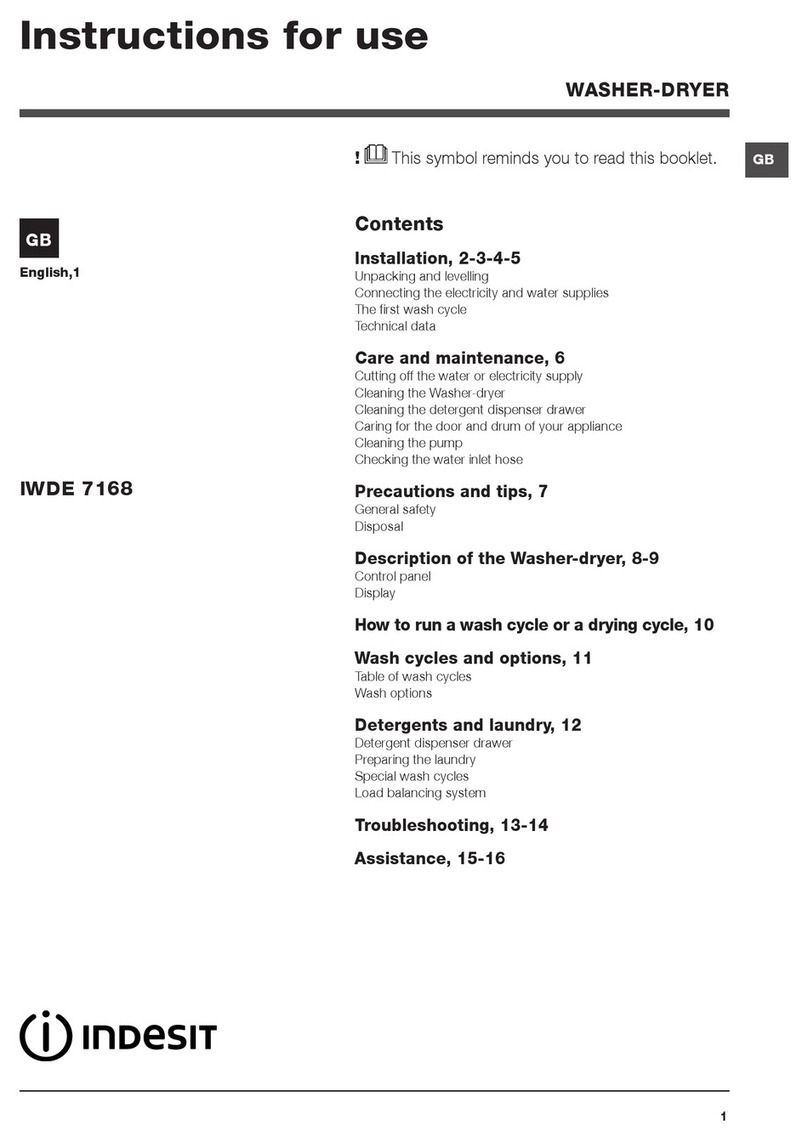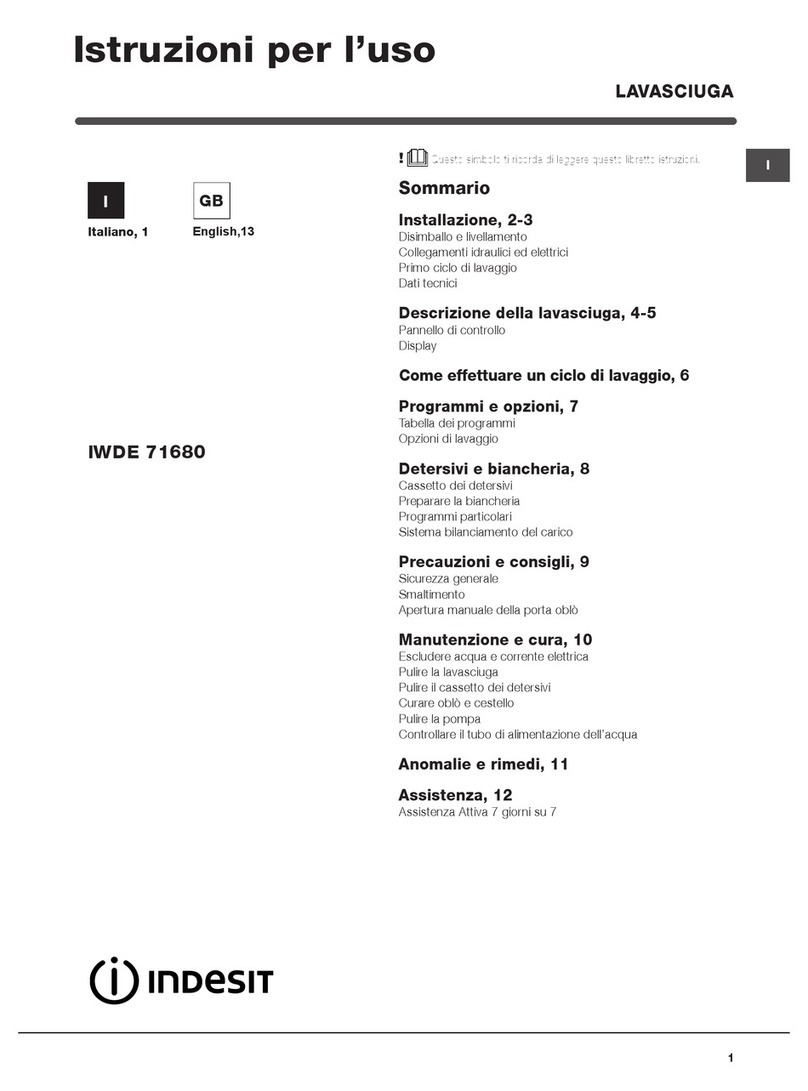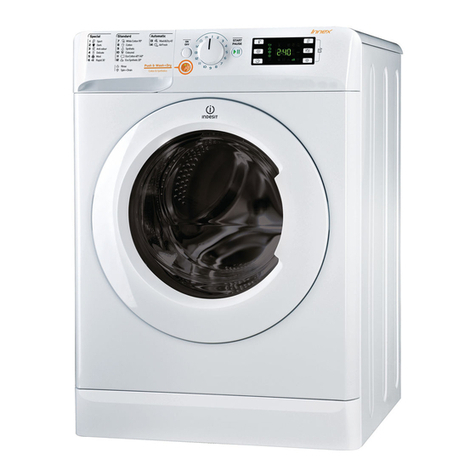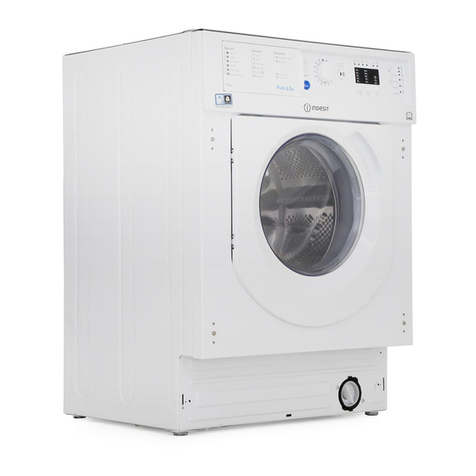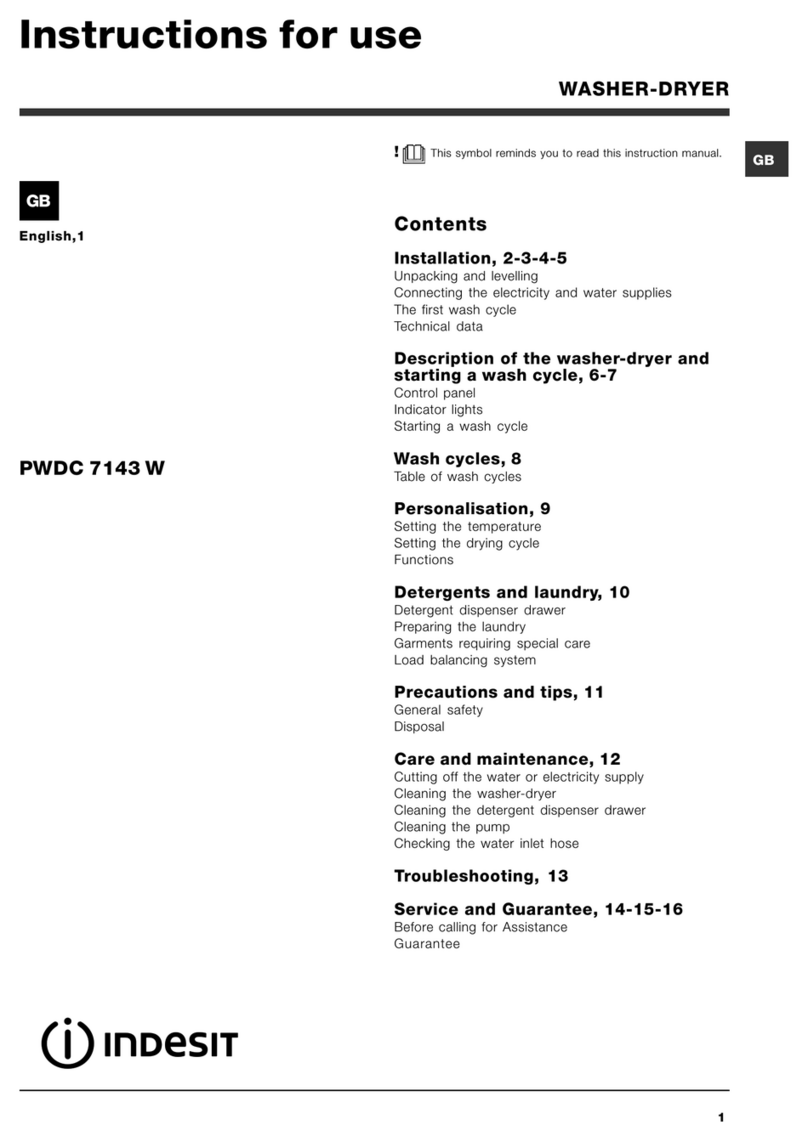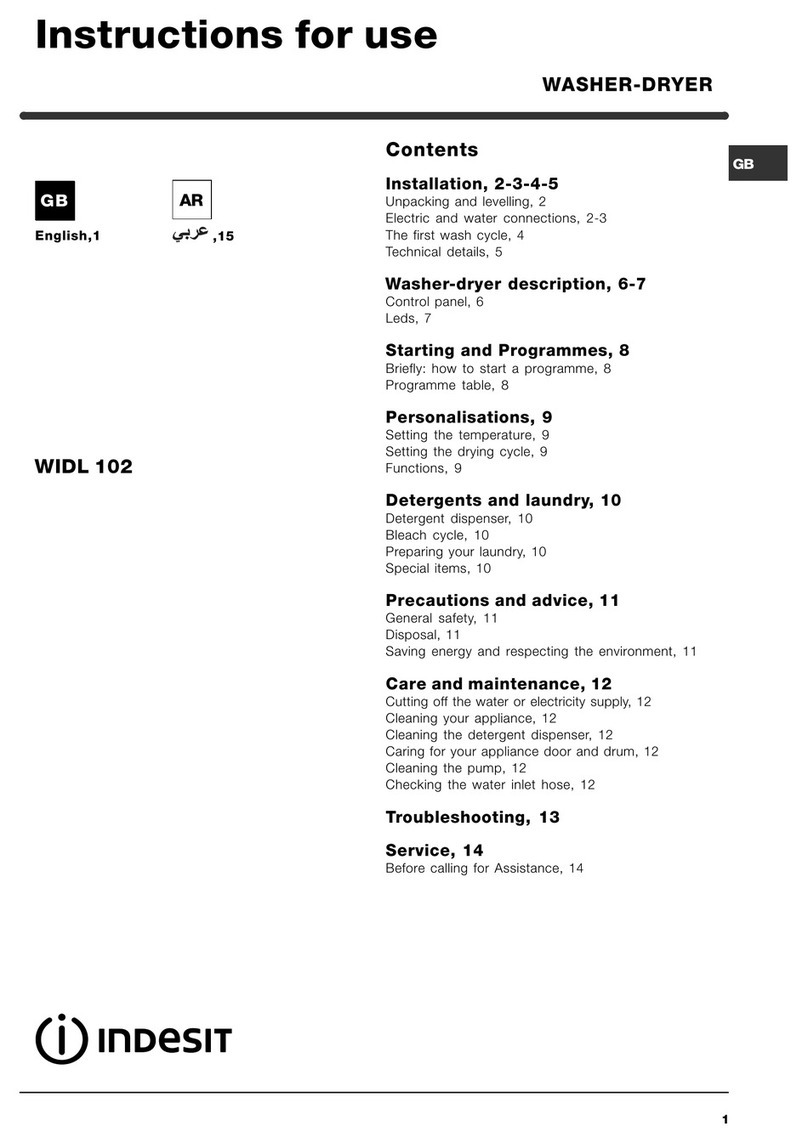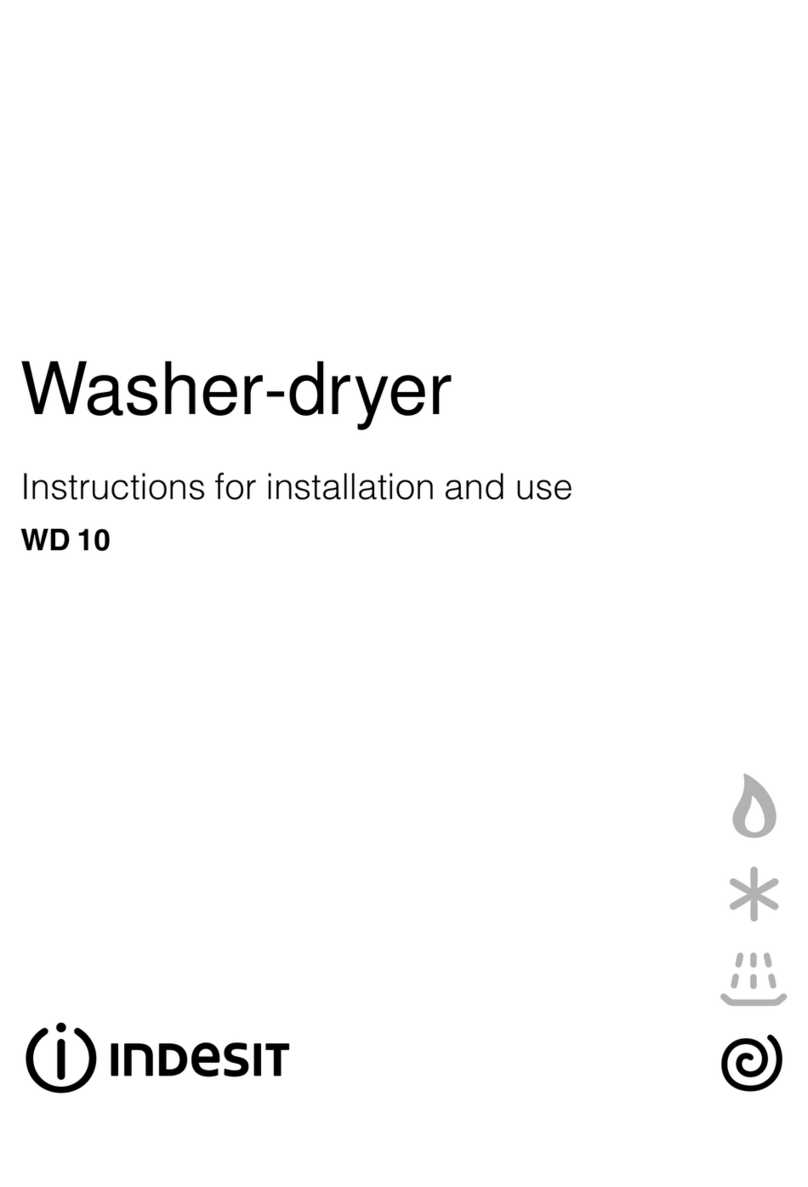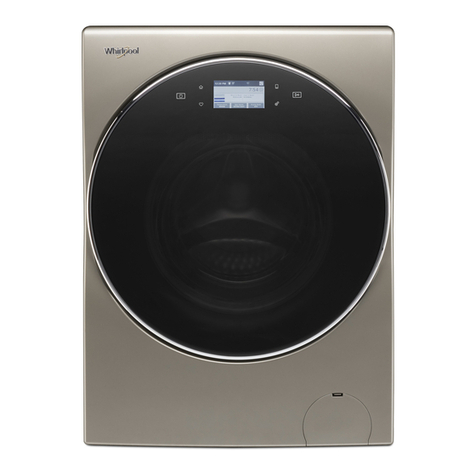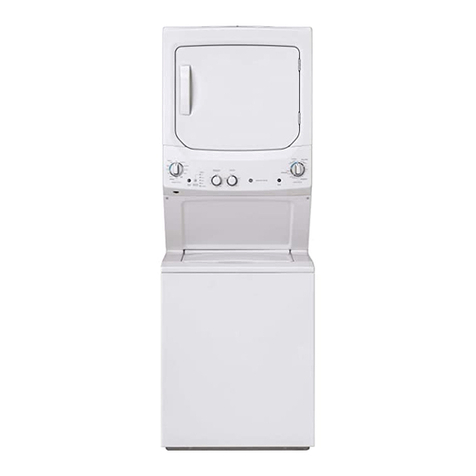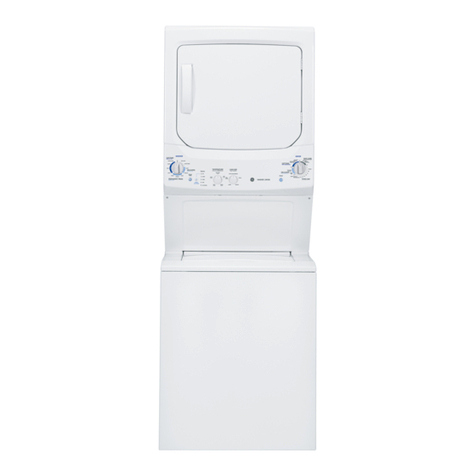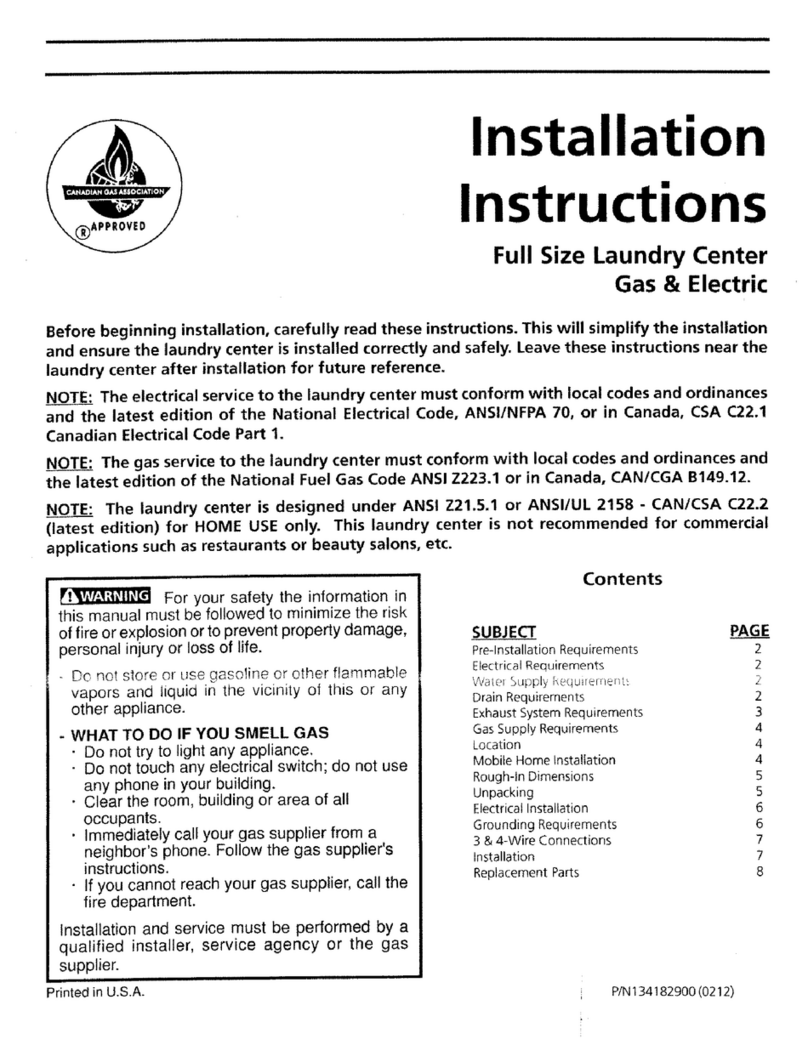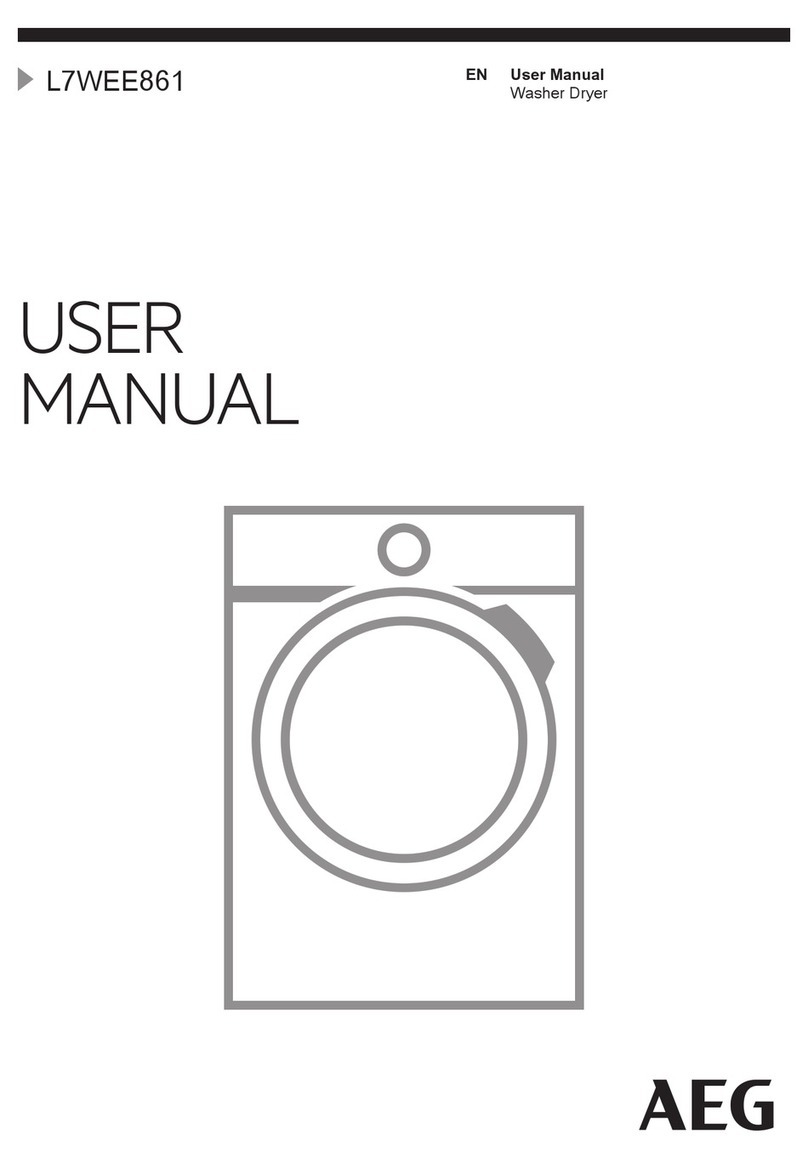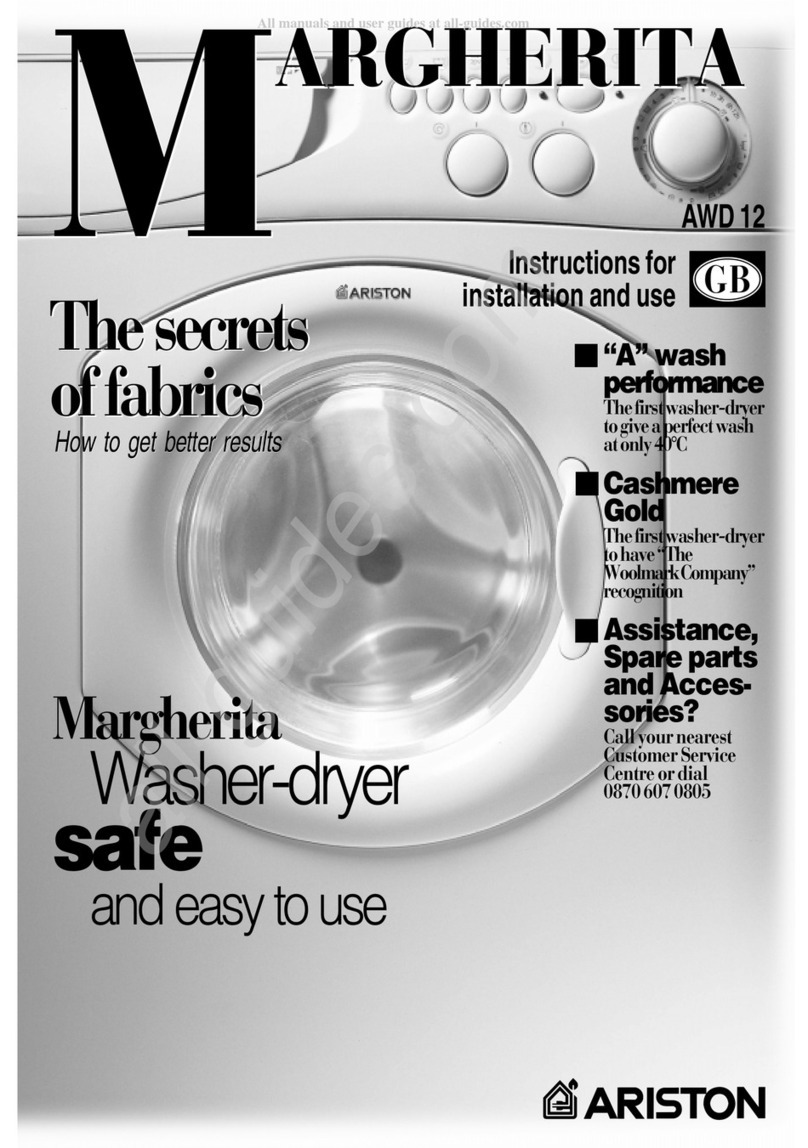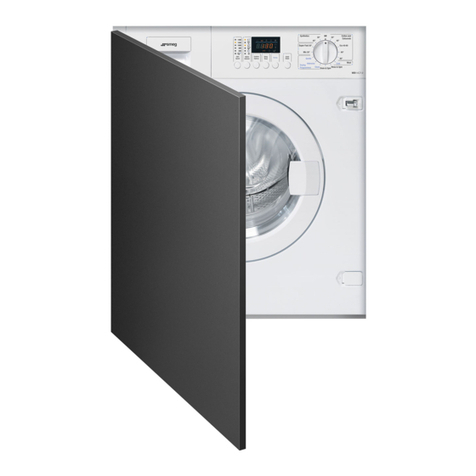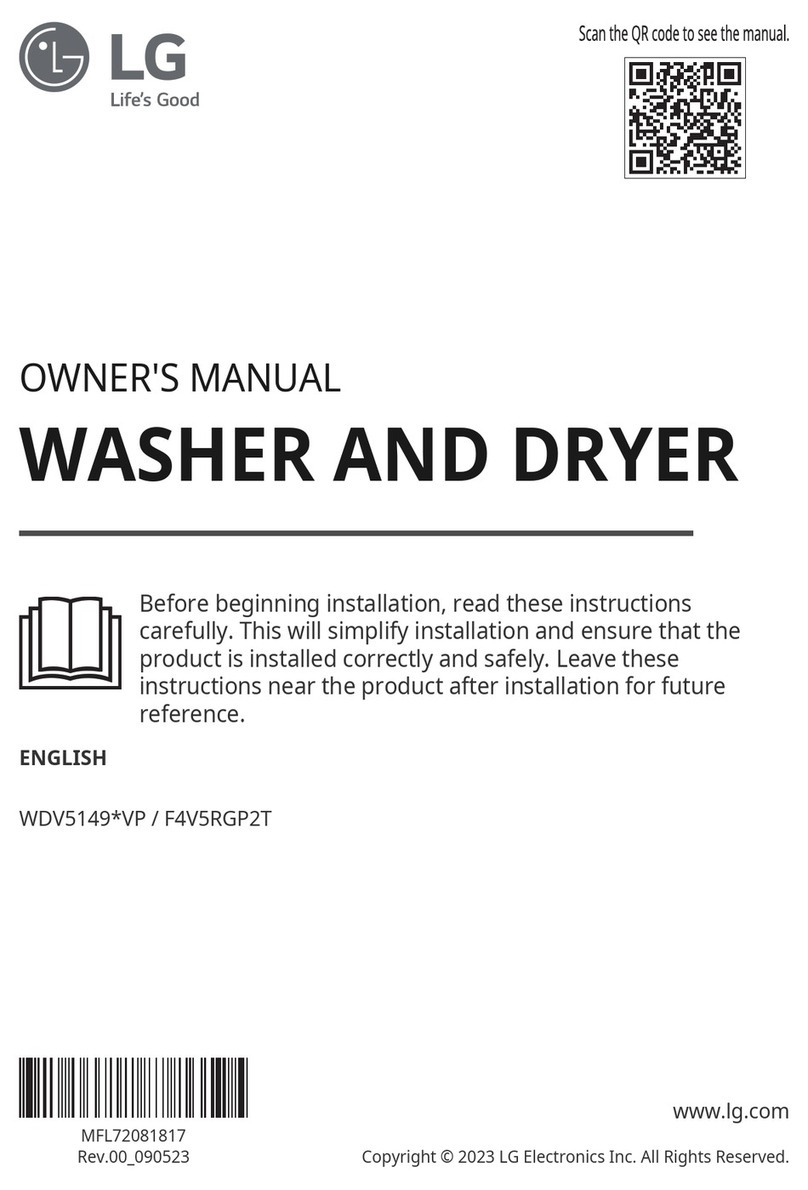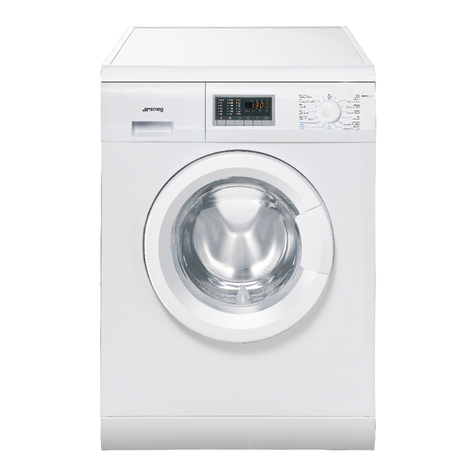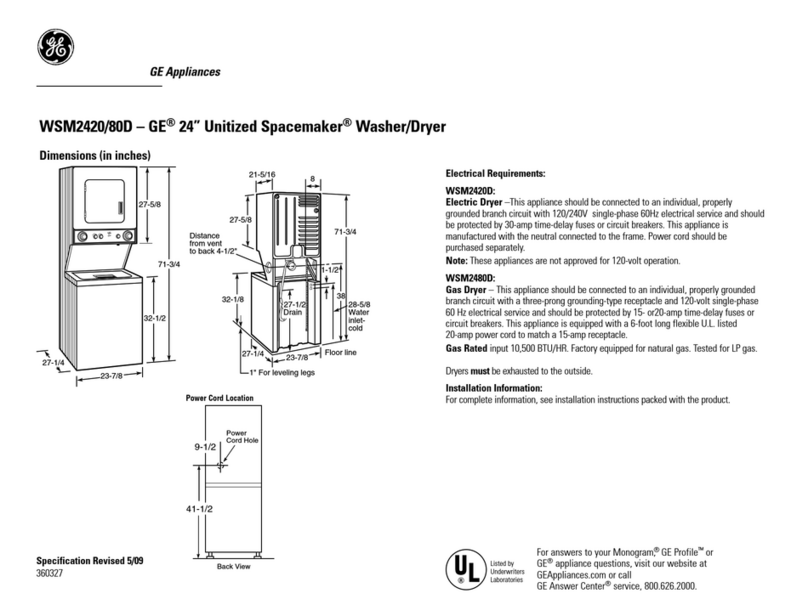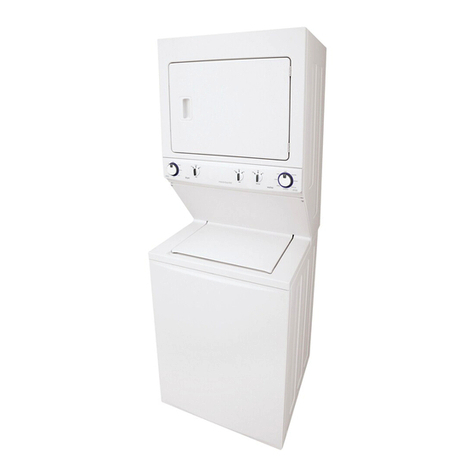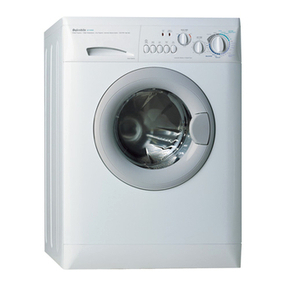8
GB
Type of fabric and
degree of soil Prog. Temp. Drying
Cycle
Detergent Fabric
softener
Cycle
length
(m in te s)
Max. Spin
Speeds
(r.p.m .)
Description of wash cycle
pre-
wash wash
tandard
Extremely soiled whites
(sheets, tablecloths, etc.) 190°C 155 Max. Pre-wash, wash cycle, rinse cycles,
intermediate and final spin cycles
Extremely soiled whites
(sheets, tablecloths, etc.) 290°C 150 Max. Wash cycle, rinse cycles, intermediate and
final spin cycles
Heavily soiled whites and fast
colo rs 260°C 140 Max. Wash cycle, rinse cycles, intermediate and
final spin cycles
Heavily soiled whites and
delicate colo rs 240°C 125 Max. Wash cycle, rinse cycles, intermediate and
final spin cycles
Slightly soiled whites and
delicate colo rs (shirts,
j mpers, etc.) 340°C 85 Max. Wash cycle, rinse cycles, intermediate and
final spin cycles
Heavily soiled fast colo rs
(baby linen, etc.) 450°C
72 800 Wash cycle, rinse cycles, anti-crease or
delicate spin cycle
Heavily soiled fast colo rs
(baby linen, etc.) 440°C 70 800 Wash cycle, rinse cycles, anti-crease or
delicate spin cycle
Wool 540°C 50 600 Wash cycle, rinse cycles, delicate spin
cycle
Very delicate fabrics
(c rtain s, silk, viscose, etc.) 630°C 45 no Wash cycle, rinse cycles, anti-crease
or draining cycle
Drying cotton 7Max.
Drying delicates 8no
Tim e 4 y ou
Heavily soiled whites and fast
colo rs 960°C 60 Max. Wash cycle, rinse cycles, intermediate and
final spin cycles
Delicate colo rs (all types of
slightly soiled garments) 10 40°C 40 800 Wash cycle, rinse cycles, delicate spin
cycle
Delicate colo rs (all types of
slightly soiled garments) 11 30°C 30 800 Wash cycle, rinse cycles and delicate
spin cycle
port
Sports shoes (MAX. 2 pairs) 12 30°C 50 800 Cold wash (witho t detergents), wash
cycle, rinse cycles, and delicate spin cycle
Fabrics for sportswear
(Tracks its, shorts, etc.) 13 30°C 60 600 Wash cycle, rinse cycles, intermediate and
final spin cycles
PARTIAL PROGRAMME
Rinse 800 Rinse cycles and spin cycle
Spin cycle 800 Draining and spin cycle
Drain no Drain
tarting and Programmes
Programme table
Notes
-For programme 9, we advise against exceeding a wash load of 3.5 kg.
-For programme 13 we advise against exceeding a wash load of 2 kg.
-For the anti-crease f nction: see Easy iron, opposite page. The information contained in the table is p rely indicative.
pecial programme
Dail (programme 11 for Synthetics) is designed to wash lightly soiled garments in a short amo nt of time: it only lasts
30 min tes and allows yo to save on both time and energy. By setting this programme (11 at 30°C), yo can wash
different fabrics together (except for woollen and silk items), with a maxim m load of 3 kg.
We recommend the use of liquid detergent.
Briefly: starting a programme
1. Switch the Washer-dryer on by pressing b tton .
All the LEDS will light p for a few seconds and
the ON-OFF/DOOR LOCK Led will begin to flash.
2. Load yo r la ndry into the washing machine and
sh t the appliance door.
3. Set the PROGRAMME knob to the programme
req ired.
4. Set the wash temperat re (see page 9).
5. Set the drying cycle if necessary (see page 9).
6. Add the detergent and any fabric softener (see page 10).
7. Start the programme by pressing the START/RESET
b tton for one second. Once the programme has
been accepted all of the option and stat s LED's
will ill minate momentarily, the Door Lock LED
will be lit and the relevant wash cycle progress
LED will also be lit.
To cancel it, keep the START/RESET b tton pressed
for at least 2 seconds.
8. When the programme is finished, the ON-OFF/
DOOR LOCK Led will flash to indicate that the
appliance door can be opened. Take o t yo r
la ndry and leave the appliance door ajar to allow
the dr m to dry thoro ghly. T rn the Washer-dryer
off by pressing b tton .
